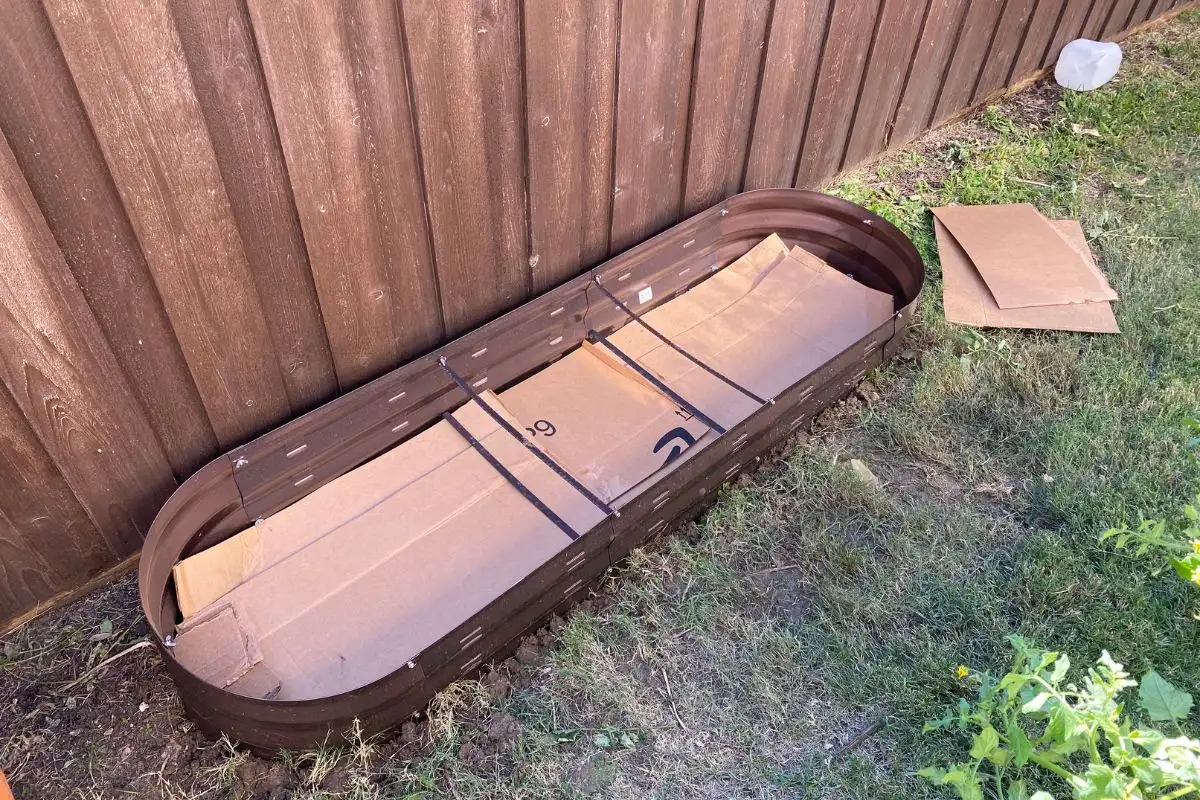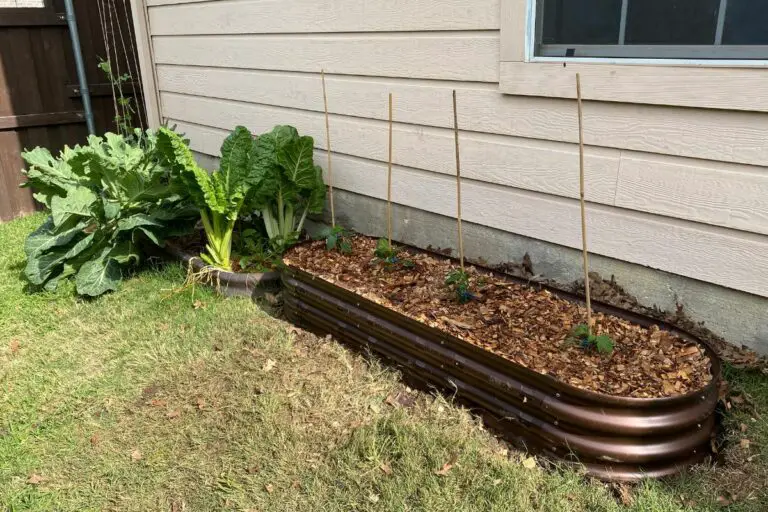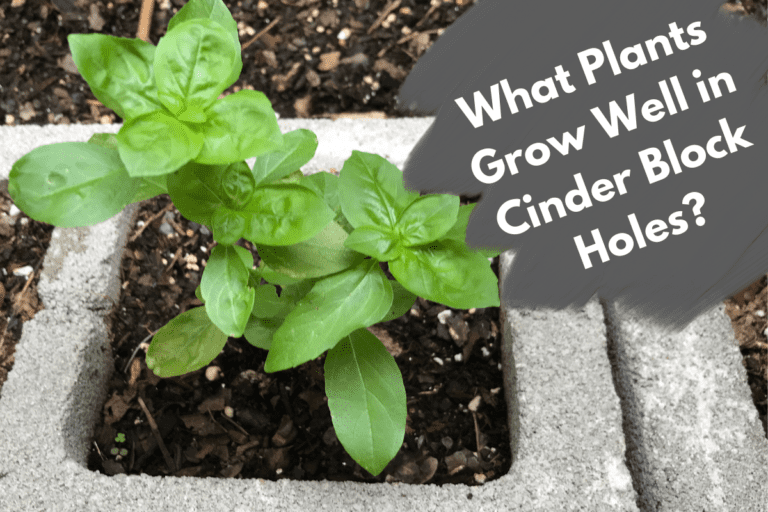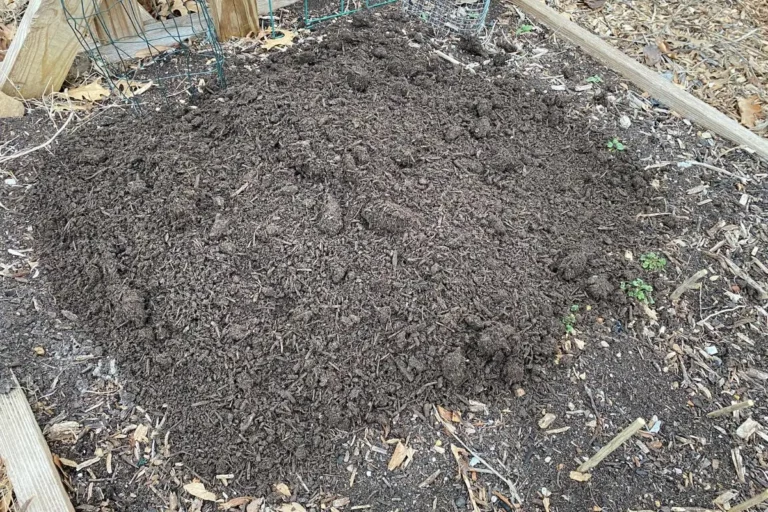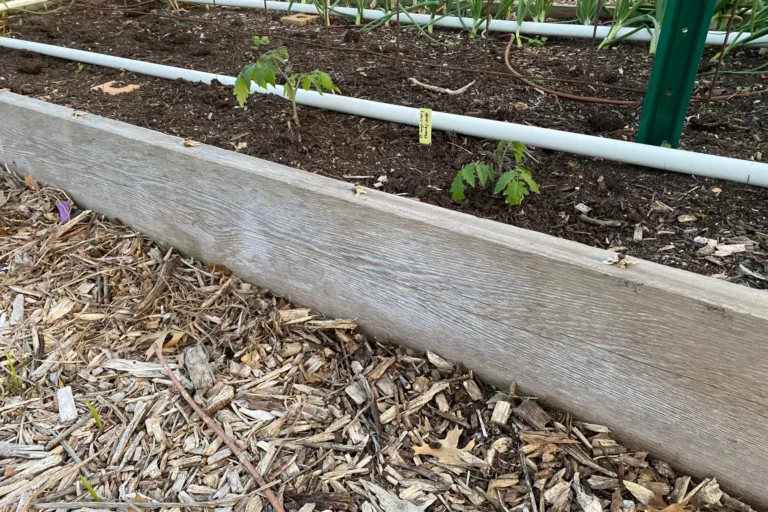7 Reasons to Put Cardboard Under Your Raised Garden Beds
Are you considering building or installing a raised garden bed on your property?
If so, it’s crucial to understand why you should place thick layers of cardboard underneath, so I wanted to share with you the things I’ve learned over the years when it comes to raised bed installations.
Putting cardboard underneath raised garden beds is crucial for several reasons:
- Good for Smothering Grasses
- Kills and Suppresses Weeds
- Cheap Alternative to Landscape Fabric
- Decomposes Quickly
- Allows Plant Roots to Access Native Soil
- Supports Earthworms and Other Organisms
- Provides Pest Protection (with help!)
While it may be tempting to skip this step or opt for other materials such as landscape fabric, there are various compelling reasons why cardboard is the superior choice, which I’ll discuss in detail below.
Long story short, putting cardboard underneath your raised beds is a cost-effective, eco-friendly solution that can improve the health of your garden in numerous ways.
As you’ll see, there are many benefits but also mistakes to avoid when selecting cardboard and arranging it under your raised beds.
So read on if you’re interested in avoiding my mistakes and installing raised beds that will help your plants thrive!
Should I Put Cardboard in the Bottom of My Raised Beds?

If you’re planning to construct or install new raised garden beds, you’ll want to pay attention to the information in this article so that you don’t do what I did a few years back.
Here’s what happened: I built a concrete block raised garden bed and didn’t put cardboard beneath it because I assumed the height of the bed would easily smother the grass and weeds below. Boy, was that a mistake!
Within 5-6 weeks, Bermuda grass had grown up through the concrete blocks as well as the concrete block holes. Nutsedge did as well. The grass and weeds just took over!
I like gardening in concrete block raised beds–and I’ve found that my plants normally thrive even when planted in the holes of concrete blocks–but this turned out to be a disappointment since the grass and weeds made it difficult for my plants to put down strong, healthy root systems.
My plants grew and produced a somewhat decent crop, but the harvests weren’t nearly as large as I had originally anticipated.
Bermuda and nutsedge alike are constant menaces in the garden, but I could have saved myself lots of time and effort if I would have followed the guidance below and placed thick layers of cardboard underneath my raised bed.

If you’d like to learn more about the successes and failures I’ve had with raised beds, check out these articles:
- 23 Plants You Shouldn’t Grow in Raised Beds
- Full Sun or Partial Shade: What’s Best for Raised Beds?
- Pros and Cons of Raised Garden Beds: Know Before You Grow!
- Should You Remove Grass Under Raised Beds?
Now that you know what’s to come, let’s look at why exactly cardboard is the perfect material for putting underneath your raised garden beds.
1. Good for Smothering Grasses
Cardboard is great for smothering and killing off grass. Just be sure to use cardboard with no dyes or printing on it, as these materials can contain chemicals that may leach into your soil.
You should also remove any tape or adhesive from the cardboard ahead of time, as this can cause issues with decomposition.
To get going, simply pick where you want to install your bed, then place at least 2-3 layers of cardboard over the entire area, ensuring that the edges overlap by several inches. This overlap will help to prevent the grass from growing through any gaps.
Moreover, make sure that the cardboard extends beyond the bottom of the raised bed by at least 3-4 inches on all sides, as this will help keep nearby grass from creeping in.
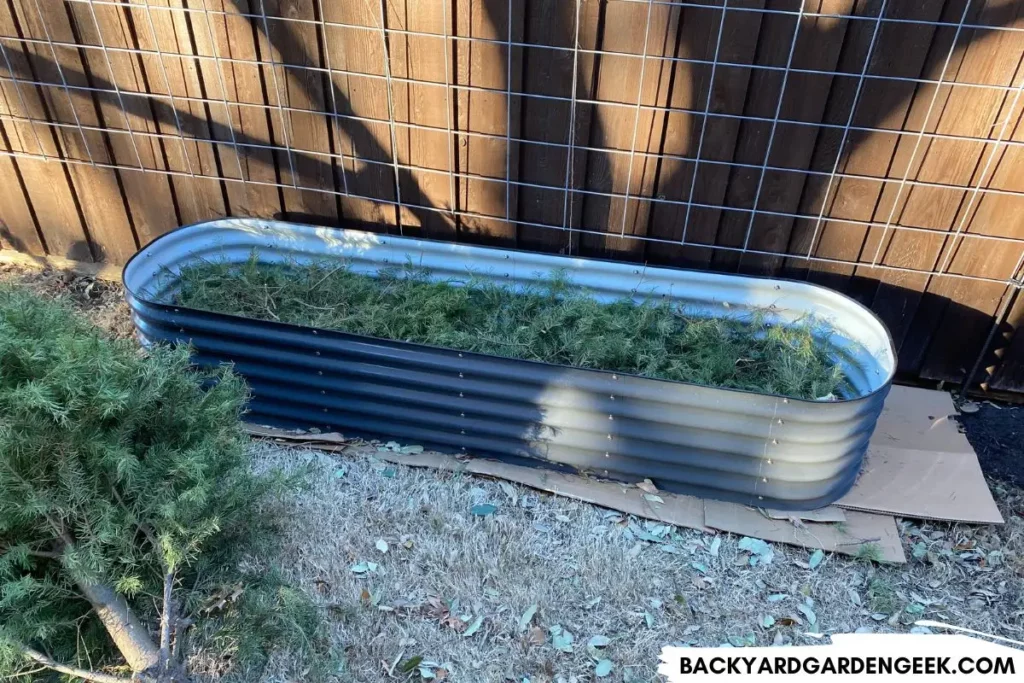
In fact, if you really want to prevent grass growth, lay thick cardboard underneath your beds, then lay landscape fabric in the walkway areas all around your beds, making sure the fabric overlaps the cardboard.
Once you’ve done that, cover the walkways in layers and layers of wood chips, which you can often get for free if you live in an area where tree trimmers work and use the getchipdrop.com app.
2. Kills and Suppresses Weeds
One of the most significant advantages of placing cardboard underneath your raised garden beds is its exceptional ability to suppress weed growth all around your raised beds.
By preventing sunlight from reaching nearby weed seeds, cardboard acts as a physical barrier, preventing weeds from germinating and growing. This can save you significant time and effort later on, allowing you to focus more on cultivating your plants and less on getting rid of unwanted weeds.
To maximize the weed-suppressing benefits of cardboard, it’s essential to use thick layers of cardboard and make sure to cover the entire area with them.
As I’ve suggested, 2-3 layers of cardboard will do just fine since they’ll block sunlight and inhibit weed growth.
You should add even more layers in areas that are prone to tough-to-get-rid-of weeds like nutsedge. This helps to prevent weeds from growing around the edges of your bed and spreading underground.
I’ve tried many different methods over the years when it comes to filling raised beds to minimize weeds and maximize plant growth. Here’s a few posts that you might like:
- 12 Reasons Why Vegetables Can Grow Better in Raised Beds
- 18 Best Materials to Put in the Bottom of Your Raised Beds
- 40 Cheap and Easy Ways to Fill Your Raised Garden Beds
- Filling Raised Beds with Just Compost: Should You Do It?
3. Cheap Alternative to Landscape Fabric
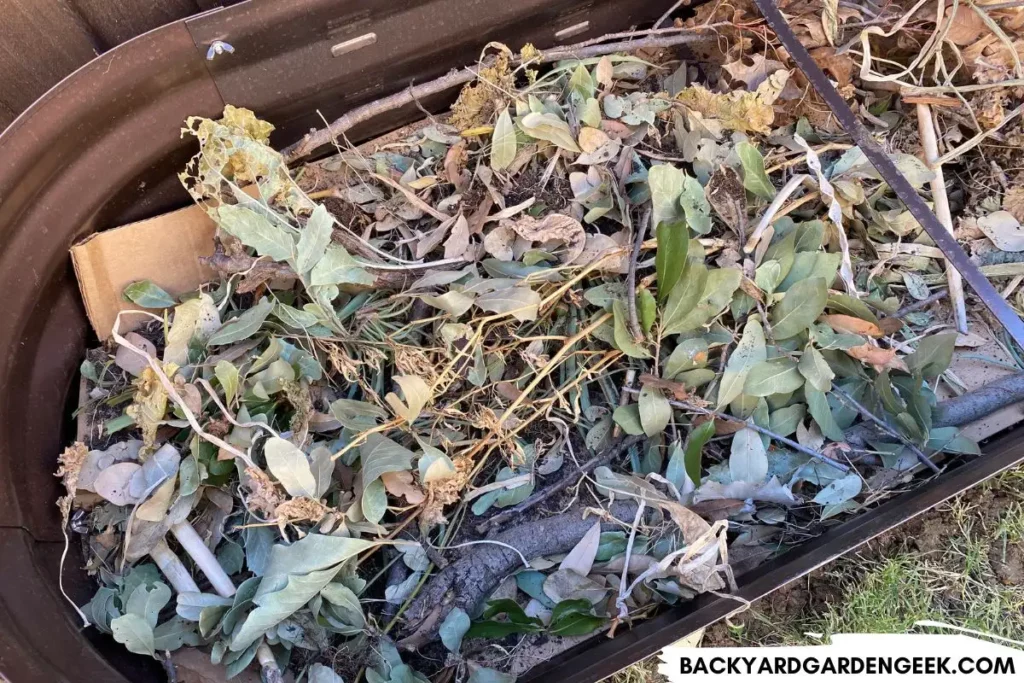
When it comes to choosing an underlayment for your raised garden bed, landscape fabric may seem like a logical choice.
However, landscape fabric won’t break down over time, limiting the ability of plant roots to access nutrients in the soil.
Additionally, landscape fabric will prevent earthworms and other beneficial microorganisms from moving from the native soil into the raised bed, which can impact soil health in the long run.
On the other hand, cardboard breaks down naturally over time, which lets plants’ roots penetrate into the native soil, allowing them to draw nutrients from it.
This can result in a more fertile and nutrient-rich soil that’s beneficial for plant growth.
Once cardboard breaks down, earthworms and other microorganisms can migrate from the native soil into the soil in the raised bed, further enhancing the soil’s health. This creates a self-sustaining ecosystem that supports healthy plant growth and minimizes the need for additional soil amendments or fertilizers.
4. Decomposes Quickly
When it comes to choosing materials to place underneath your raised garden beds, cardboard is great because it only takes 8 months or so to decompose fully, and that process adds some valuable organic matter to your soil.
As the cardboard decomposes, the soil in your raised beds will gradually come into direct contact with the native soil, which is good for both.
However, it’s important to choose the right type of cardboard.
Avoid using dyed cardboard or any cardboard that has packing tape, stickers, plastic film, or other synthetic materials. These materials can introduce chemicals or synthetic materials into your garden and should be avoided.
Before putting the cardboard down, make sure to pull off and discard any tape or stickers. Amazon boxes are a suitable choice as long as they don’t have dyed pictures on them.
5. Allows Plant Roots to Access Native Soil
By placing cardboard underneath your raised garden beds, you can create pathways for plants’ roots to access the nutrients in the native soil.
This is particularly important if you’re building your garden on top of poor-quality soil or in an area with nutrient deficiencies.
I’ve got mostly hard-packed clay in my backyard, and I certainly don’t want to plant anything directly in that. But I’ve had lots of success with my raised beds, especially for my tomatoes and pepper plants. The plants love the healthy soil profile of the raised beds, but they’re also able to draw additional nutrients from my native soil, so they’ve generally done very well despite the terrible soil in my backyard.
Check out these articles to learn more about my favorite plants to grow in raised garden beds:
- 13 Must-Grow Herbs for Your Raised Garden Beds
- 32 Must-Try Vegetables for Your Raised Garden Beds
- Putting Raised Beds on the Patio: Should You Do It?
If your raised beds are relatively short, anywhere from 4-12 inches, you should not put a landscape barrier underneath them because your plants will need to reach down into the native soil as they grow.
I’ve written about this in detail in an article on the proper raised bed depth for growing tomatoes.
Simply put, landscape fabric or any other permanent barriers can prevent plants from accessing additional soil and getting the nutrients they need to thrive.
6. Supports Earthworms and Other Organisms
Unlike landscape fabric, cardboard will eventually allow earthworms and other beneficial microorganisms to migrate from your native soil into your raised beds.
Cardboard will completely decompose in 8-12 months, allowing your newer soil to come into direct contact with your native soil.
This’ll end up creating natural pathways for earthworms, pill bugs, and all kinds of microorganisms to migrate into the raised bed soil.
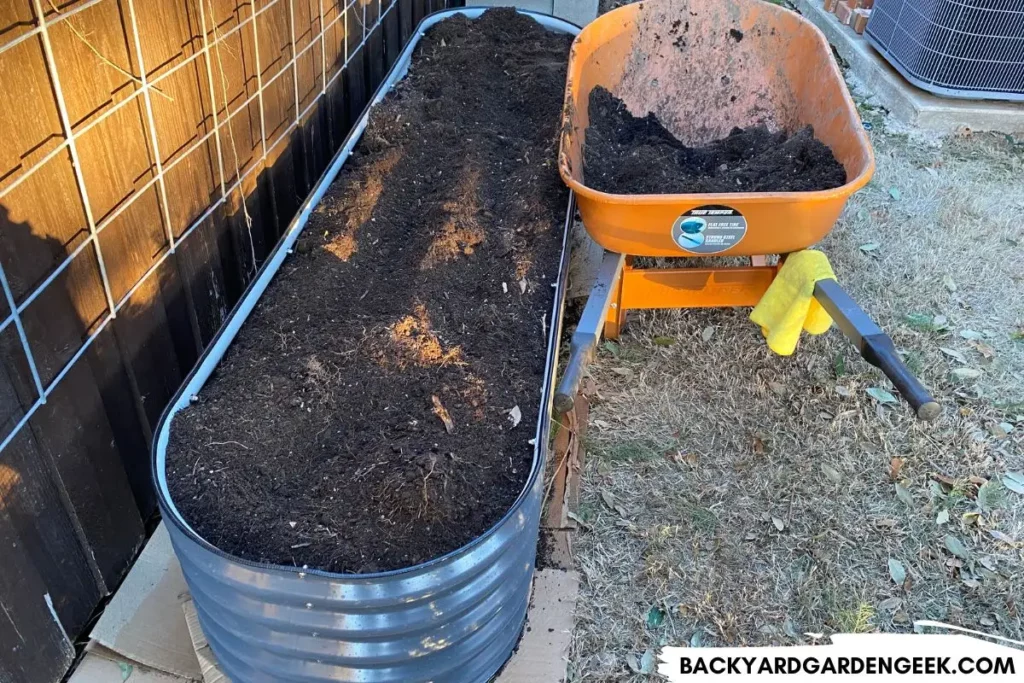
This is important because these beneficial bugs and microorganisms play a crucial role in maintaining soil health. Earthworms, for instance, help to break down organic matter, improve soil structure, and increase nutrient availability, while pill bugs help to compost decaying materials and aerate the soil.
Over time, the migration of these beneficial microorganisms can lead to a healthier soil profile in your raised garden beds.
7. Provides Pest Protection (with help!)
If you live in an area with burrowing vermin like groundhogs, voles, or moles, you should be concerned about them tunneling under your raised garden beds and damaging your plants.
While thick layers of cardboard will help deter such pests at first, it’s neither a sufficient nor permanent deterrence to burrowing animals, especially as those layers begin to break down.
To prevent unwanted pests, it’s essential to cut a piece of hardware cloth to size and layer it on top of the cardboard before adding soil and plants to your raised beds.
Burrowing animals will rip right through cardboard, but they won’t be able to penetrate the hardware cloth. This will provide a permanent barrier against burrowing pests while still allowing plants’ roots to reach down into the native soil for additional nutrients.
Despite the presence of the hardware cloth, the cardboard underneath will still decompose over time, allowing earthworms and other beneficial microorganisms to migrate from your native soil into your raised beds.
Because of its affordability, sustainability, and versatility, cardboard is a great choice for any gardener looking to expand their garden and get the most out of their raised garden beds.
So if you’re looking for an easy and eco-friendly way to prepare your raised garden beds, ditch the landscape fabric and consider using cardboard as your go-to solution!
Further Reading
If you’ve enjoyed reading about raised garden beds and want to learn more, check out these related articles:
